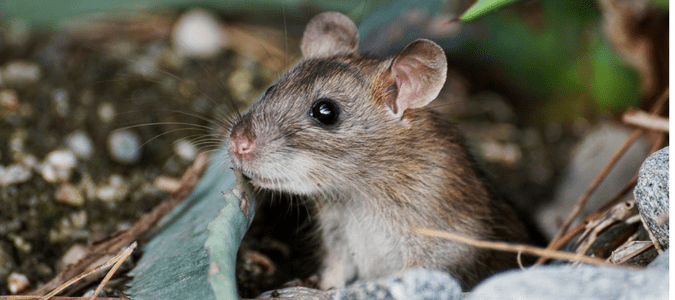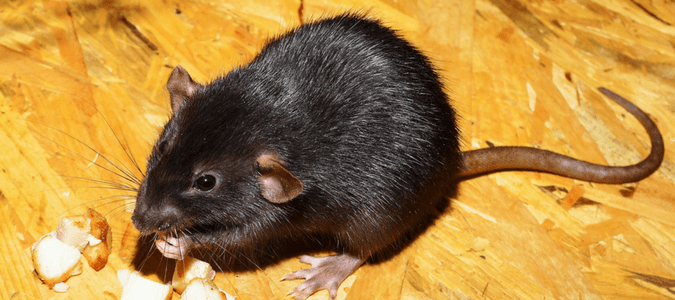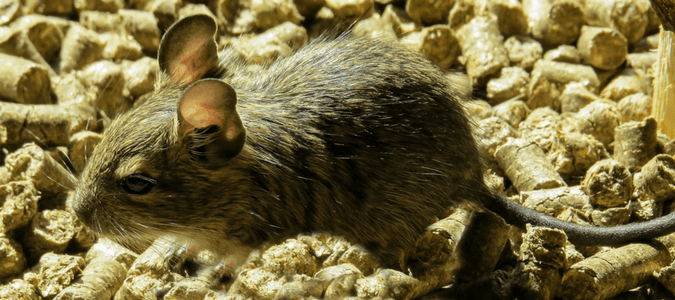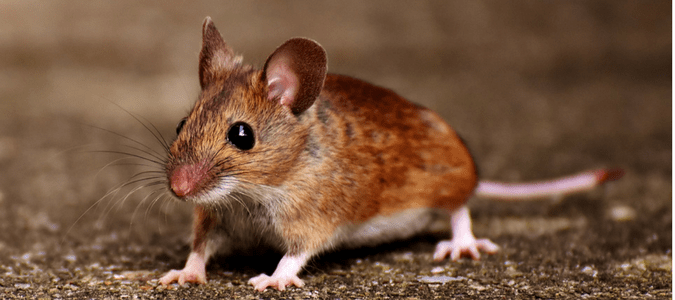
In a battle between rats vs. mice, rats will win. Known as muricide, rats will kill and eat mice out of hunger. That said, do you really care which species of rodent is scurrying across your floor or making scratching sounds in your walls or attic? Probably not.
The reason you should care about the differences between mice and rats is that your pest control efforts will vary, depending on which type of rodent you have and which species. For example, catching and killing rats and mice are different. A trap for a mouse won’t work on a rat and vice versa. Where you set the traps can also make a big difference in how effective your efforts are, whether you have a roof rat or Norway rat problem.
How are these pesky pests different? We’ll explore the many ways these animals are distinct so that you can better devise effective, long-term pest control solutions.
Rat vs Mouse Droppings
One of the ways people become aware they have a rodent problem is through the discovery of droppings. Although the last thing you want to do is to get up-close-and-personal with any kind of feces, inspecting these “souvenirs” is a decent way to determine which rodent is causing you problems.
Before you take a closer look, it’s important to realize that you shouldn’t handle droppings without gloves. Rodent feces can carry harmful bacteria, diseases and viruses, including the hantavirus.
A Norway rat has capsule-shaped feces, while a roof rat has spindle-shaped droppings and a house mouse has rod-shaped excrement. Droppings are typically found around where these creatures eat. So, if rats and mice have found food around your home, you might find their droppings in the kitchen, as well as the attic or other places they hide. You can even find these unwanted surprises near their nests.
Similar to rats, mice droppings are found where these animals+ are most active. Feces can be found near locations where mice nest. If you find chewed cardboard boxes, electrical wiring, wood, paper, cloth, books, furniture, insulation or walls—basically, if you find something around your home that has damage from gnawing or chewing, especially if it is paired with droppings—then you probably have a mouse or rat problem.
Rats and Mice Facts
Rats and mice may have evolved from the same species, but over time, the two types of animals have become more distinct.
Appearance and Anatomy
The most obvious way to tell these two animals apart is to describe what they look like. Here are some ways these pests are different:
- Rats are bigger than mice.
- Mice have longer tails in comparison to their bodies than rats.
- Mice have five pairs of nipples, while rats have six.
- A rat’s front teeth grow between 4.5 and 5.5 inches per year. These rodents constantly wear these incisors down with constant gnawing. Since mice are smaller, their teeth are smaller, meaning that chew marks look like tiny scratches, unlike the deeper marks that rats can leave behind.
- Mice are color blind and rats have poor eyesight. But all the other senses for both animals are highly acute, allowing them to adapt to many environments.
- Mice have fast-beating hearts, at around 632 beats per minute. To put that into perspective, human hearts beat between 60 to 100 beats per minute and rat hearts beat between 330 and 480 times eac minute.
Behavior
Now that we know a few ways to tell rodents apart by sight, what do we know about how these animals act? Here’s a list of distinguishing characteristics:
- Rats kill (and eat) mice, but mice don’t kill rats.
- Mice live everywhere: inside and outside, in both rural and urban areas. Rats prefer urban areas.
- Rats and mice are not picky eaters. Both chew on nearly anything, including things that are inedible, like electrical wires. However, rats really prefer grain and meat.
- Mice can jump nearly 18 inches in the air and are good climbers and swimmers. Even more impressive, brown rats can jump more than 30 inches in the air, while roof rats have been known to jump almost four feet to travel between a rooftop and a tree or electrical wire.
- Rats make hissing, chattering and squeaking noises to express happiness, fear and pain. Mice are more likely to make high-pitched squeaks to communicate with one another.
- A mouse travels in an area between 10 to 30 feet in diameter to look for food and water. Rats typically have a larger territory, sometimes going as much as 100 feet in search of sustenance.
- A mouse can slip through ¼ inch holes and gaps. A rat only needs a whole ½ inch wide to enter your home.
- Roof rats live on upper floors of a building or home, while Norway rats generally live in lower floors and sewers.
Lifespan and Reproduction
Both types of rodents are prolific. How fast do they reproduce?
- Mice can have babies year round, with litters of five or six young each time. A female can have five to 10 litters each year. Rats can also reproduce any time of year, with up to 14 offspring at a time. Rats usually have about 5 litters per year. Norway rats have six to 12 babies per litter.
- Rats live two to three years and become sexually active when they reach the age of three to four months. In the wild, a mouse will only live for about a year and a half, although in a protected environment, these rodents can survive for up to three years. By four to six weeks old, mice can start having babies.
Damage
Some people think mice and rats are cute and others are terrified of these creatures. What’s one thing we can agree upon? These pests can do some serious damage. For example:
- The International Center for Wildlife Damage Management found that 76 percent of 1,000 grain samples in one study were contaminated with rodent droppings, with mouse droppings outnumbering rat droppings by a 12 to one ratio.
- Both mice and rats cause crop damage and contaminate stored food. The United Nations has estimated that the economic impact of rats alone is $19 billion per year in the United States. Since mice are smaller and eat less, researchers theorize their impact is considerable, but not as significant.
- Rats and mice chew on everything—literally everything—and cause significant damage to homes and buildings, such as electrical wires, ductwork, HVAC units, walls, foundations and more. Again, rats tend to cause more damage because their teeth are larger and more powerful.
- Rats carry a variety of diseases including plague, salmonellosis, trichinosis, Lyme disease, rat-bite fever and much more. Mice, particularly the house mouse, also carry diseases, but not as many as rats.
What Do Rats and Mice Look Like?
If you do see a rodent, it may only be for a moment. However, if you know what to look for, you might be able to tell whether it’s a rat or a mouse as they scurry through your home.
Weighing around half an ounce, a mouse is smaller, with a pointed nose, large ears and fur. Mice are typically light brown, with some gray, with a dark tail.
Norway rats are much bigger than house mice, with adults weighing around 11 ounces. These rodents have thick bodies a blunt nose with short ears and brown to black shaggy fur. A Norway rat’s tail is dark on top and pale underneath.
Roof rats are smaller than Norway rats and weigh around seven ounces, with gray and black smooth long, slender bodies, a dark tail, pointed nose, long ears and dark tails.

What’s the Difference Between a Mouse and a Rat?
Scientists believe the house mouse appeared around 10,000 years ago in the part of the world where is Pakistan currently located. There are hundreds of types of mice, including the deer mouse, house mouse, field mouse, wood mouse, dormouse, spiny mouse and zebra mouse. Mice come in a variety of colors, including as white, brown and gray.
Both the Norway rat and roof rat are believed to have originated in Asia. Black rats were the first to make the trip to Europe. The black rat is blamed for the spread of the bubonic plague to humans, which wiped out a significant portion of the population in Europe.
The truth is that rodents have evolved to thrive where humans live. What’s the best way to keep rodents away? Homeowners can protect their home and belongings from rodent damage by:
- Sealing any holes, gaps or crevices around your home’s exterior.
- Setting out traps in out of the way areas where you have found droppings or other signs of rats or mice.
- Eliminate sources of food or water by making sure food containers are securely closed, storing pet food inside, keeping lids on trash cans and eliminating sources of standing water in your yard.
ABC Solves Your Rodent Problems
Because of the different behaviors of rats (and even between species of rats) and mice, efforts to control them differ, which can pose a challenge for even the most determined homeowner. The professionals at ABC Home & Commercial Services will identify what type of rodent you have and create a customized plan to eradicate them from your home—for good.



